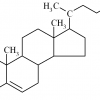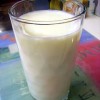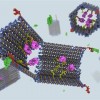Autumn Leaves
 Autumn is my favorite season. I enjoy the cool weather, unpacking my sweaters from the attic and sleeping under my cozy comforter. But better than all of the above are the fantastic red, yellow and orange leaves that adorn the deciduous trees here in New York. Before I worked at the DNA Learning Center, this process was simply a beautiful rite of fall. Now, I see the whole process in a different light. It’s an elegant series of genetic steps that evolved millions of years ago, for a reason much bigger than beauty!
Autumn is my favorite season. I enjoy the cool weather, unpacking my sweaters from the attic and sleeping under my cozy comforter. But better than all of the above are the fantastic red, yellow and orange leaves that adorn the deciduous trees here in New York. Before I worked at the DNA Learning Center, this process was simply a beautiful rite of fall. Now, I see the whole process in a different light. It’s an elegant series of genetic steps that evolved millions of years ago, for a reason much bigger than beauty!
For most of the year, deciduous trees are green because of chlorophyll in the chloroplasts. This pigment helps harness energy from the sun to fuel photosynthesis, or food production. In the fall, days become shorter and sunlight more sparse, so plants begin to prepare for the winter – a period during which they rely on stored nutrients. Nutrients are stored and superfluous leaves are shed , but before that, the chlorophyll begins to disappear, revealing other pigments such as yellow and orange that weren’t visible before. Sometimes during this process, new pigments (such as reds) are produced as well.
This is controlled by up to 35 genes that can turn on and off in response to the reduction of sunlight hours. It is a great example of the interaction between an organism’s DNA and its environment, a phenomenon many people are unaware of. The traits and characteristics of all living things are the result of a combination of its genetic makeup and its physical and chemical surroundings. To learn more about this type of interaction, go to chapter 35, “DNA responds to signals from outside the cell.”
| Print article | This entry was posted by Amanda McBrien on October 28, 2011 at 4:21 pm, and is filed under G2C Online. Follow any responses to this post through RSS 2.0. You can leave a response or trackback from your own site. |










